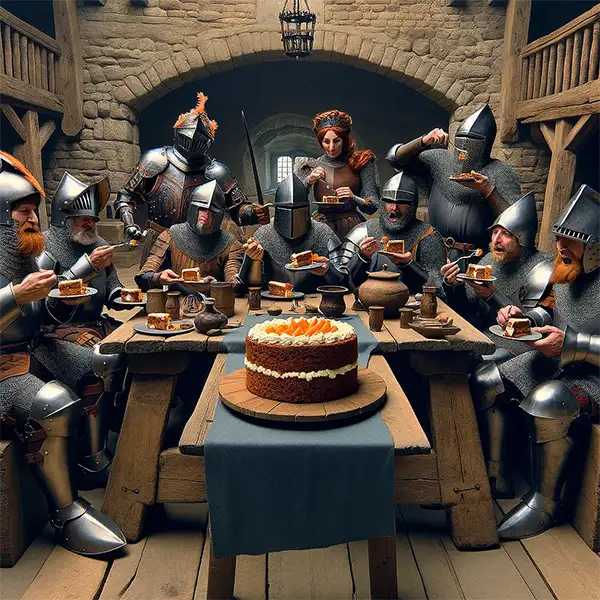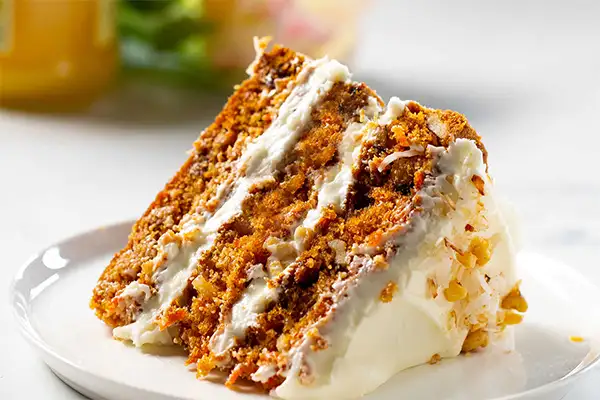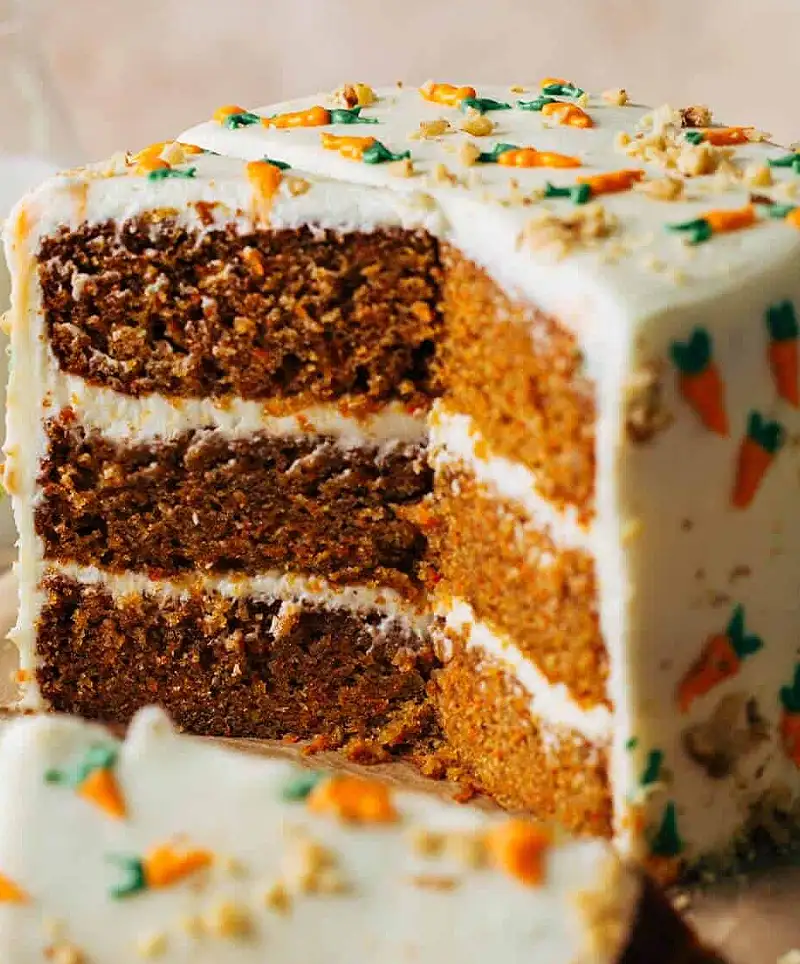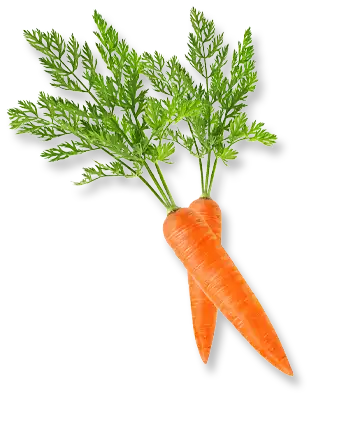A Sweet Slice of History!
Welcome to the whimsical and wonderful world of National Carrot Cake Day! Mark your calendars, as every February 3rd, we pay homage to a dessert that boldly combines the unexpected: the humble carrot and the splendor of cake. This isn't just a day for cake enthusiasts; it's a celebration for adventurers in the culinary landscape, where a simple root vegetable becomes the centerpiece of a beloved treat.
But why dedicate an entire day to carrot cake, you ask? Well, it's not every day you find a dessert that challenges the norms with such delicious audacity. In a world where chocolate and vanilla reign supreme, carrot cake stands out with its unique blend of flavors and textures. It's like that quirky friend who's always full of surprises – sweet, a bit spicy, and undeniably delightful.
Think about it: someone, somewhere, once looked at a carrot – a staple in salads and stews – and thought, "This would make an excellent cake!" It's this kind of culinary creativity that has given us some of the best food innovations. National Carrot Cake Day isn't just about indulging in a slice (or two) of this delectable cake; it's a celebration of imagination, of turning the ordinary into the extraordinary.
So, let's embark on a journey through time, from the carrot cake's humble beginnings to its present-day fame. We'll explore how this orange-rooted veggie became the star of a dessert that has found its way into our hearts and bakeries worldwide. There will be fun facts, a peek into the carrot cake's anatomy, and, of course, suggestions on how to celebrate this day with gusto and a touch of humor. Get ready to have your cake and eat it too, as we dive into the sweet and sometimes nutty world of carrot cake!
The Carrot Cake's Origins
The story of carrot cake is as rich and layered as the cake itself. While today it's celebrated with cream cheese frosting and modern twists, its origins are steeped in history, dating back to the medieval period. Imagine a time when sugar was not just a luxury but a rarity. This was a time when creativity in the kitchen was not just for flair but a necessity.
 In medieval Europe, sweeteners were hard to come by, and sugar was particularly scarce and expensive. Resourceful cooks turned to what was available – and that’s where carrots enter the culinary stage. Carrots, with their natural sweetness, became a popular sugar substitute. These were not the bright orange carrots we know today but varied in colors like purple, white, and yellow. They were grated and added to puddings and sweet pies, offering a hint of sweetness without the luxury of sugar.
In medieval Europe, sweeteners were hard to come by, and sugar was particularly scarce and expensive. Resourceful cooks turned to what was available – and that’s where carrots enter the culinary stage. Carrots, with their natural sweetness, became a popular sugar substitute. These were not the bright orange carrots we know today but varied in colors like purple, white, and yellow. They were grated and added to puddings and sweet pies, offering a hint of sweetness without the luxury of sugar.
This ingenious use of carrots paved the way for the carrot pudding, an early ancestor of the carrot cake. Found in recipe books as far back as the 10th century, these puddings were more akin to a steamed, spiced, sweet carrot mash than the fluffy cakes we adore today. It was a dish born out of necessity but embraced for its flavor and heartiness.
The evolution of carrot cake as we know it began in the 18th and 19th centuries with the advent of baking soda and baking powder. These ingredients revolutionized baking, turning dense puddings into light, airy cakes. Carrot cake recipes began appearing in cookbooks, evolving over time with the addition of ingredients like cinnamon, cloves, and nutmeg, which complemented the carrot's natural sweetness.
It's interesting to note that while Europe was enjoying carrot puddings across the ocean, George Washington was reportedly served a carrot tea cake at Fraunces Tavern in New York City in 1783. This suggests that the appreciation for carrot-infused desserts had already started to take root in America.
The 20th century marked the carrot cake's ascent from a practical, economical dessert to a fashionable and beloved treat. The two World Wars, with their rationing of sugar and other commodities, saw a resurgence in the cake's popularity. Resourceful homemakers revisited the old idea of using carrots for natural sweetness. Post-World War II, the carrot cake began to appear in restaurants and cafes, gaining a reputation not just for its flavor but also for its moist, dense texture.
As we celebrate National Carrot Cake Day, it's fascinating to reflect on how this dessert has traveled through time. From a medieval sweetening solution to a trendy and sought-after dessert, the carrot cake's journey is a testament to culinary adaptation and innovation. So, when we enjoy a slice of carrot cake today, we're not just savoring a delicious treat; we're biting into a piece of history.
During World War II, when sugar was rationed, carrot cake experienced a resurgence. It was like the culinary version of a superhero – saving the day with its sweet, vegetable-based powers. Post-war, it wasn't just about practicality anymore. The carrot cake began to be appreciated for its moist, spiced deliciousness, and by the 1960s and 70s, it had secured its place in the dessert hall of fame.
 A classic carrot cake is a symphony of flavors and textures. It's not just about carrots – oh no. This cake is a harmonious blend of spices like cinnamon, nutmeg, and sometimes ginger, combined with nuts (usually walnuts or pecans) and often pineapple or coconut for extra moisture and sweetness. The crowning glory? Cream cheese frosting – a tangy, creamy contrast to the cake’s earthy sweetness.
A classic carrot cake is a symphony of flavors and textures. It's not just about carrots – oh no. This cake is a harmonious blend of spices like cinnamon, nutmeg, and sometimes ginger, combined with nuts (usually walnuts or pecans) and often pineapple or coconut for extra moisture and sweetness. The crowning glory? Cream cheese frosting – a tangy, creamy contrast to the cake’s earthy sweetness.
Celebrating National Carrot Cake Day is easy and delicious. The simplest way? Eat carrot cake! Whether you bake it yourself using a family recipe or grab a slice from your favorite bakery, it's all about enjoying this unique dessert. For the more adventurous, why not host a carrot cake bake-off? Or, for those who prefer a savory twist, explore recipes for carrot cake-inspired dishes – think carrot cake pancakes or muffins.
Fun Facts to Nibble On
- Carrot cake was voted one of the UK’s favorite cakes in 2011. Clearly, the Brits know their cakes!
- The world’s largest carrot cake weighed a whopping 1,322 kg (2,917 lbs), created in 2012. That's a lot of carrots!
- Carrots weren’t always orange! They used to come in purple, white, and yellow. Imagine a rainbow carrot cake!
While February 3rd is the official day to celebrate, let’s be honest: every day can be Carrot Cake Day. This cake’s journey from a medieval sweetening hack to a beloved modern dessert is a testament to culinary creativity and evolution. So here's to carrot cake – a dessert that’s not only packed with flavor but also sneaks in a serving of vegetables. Now that’s what we call having your cake and eating it, too!
Please Share our Content






 In medieval Europe, sweeteners were hard to come by, and sugar was particularly scarce and expensive. Resourceful cooks turned to what was available – and that’s where carrots enter the culinary stage. Carrots, with their natural sweetness, became a popular sugar substitute. These were not the bright orange carrots we know today but varied in colors like purple, white, and yellow. They were grated and added to puddings and sweet pies, offering a hint of sweetness without the luxury of sugar.
In medieval Europe, sweeteners were hard to come by, and sugar was particularly scarce and expensive. Resourceful cooks turned to what was available – and that’s where carrots enter the culinary stage. Carrots, with their natural sweetness, became a popular sugar substitute. These were not the bright orange carrots we know today but varied in colors like purple, white, and yellow. They were grated and added to puddings and sweet pies, offering a hint of sweetness without the luxury of sugar. A classic carrot cake is a symphony of flavors and textures. It's not just about carrots – oh no. This cake is a harmonious blend of spices like cinnamon, nutmeg, and sometimes ginger, combined with nuts (usually walnuts or pecans) and often pineapple or coconut for extra moisture and sweetness. The crowning glory? Cream cheese frosting – a tangy, creamy contrast to the cake’s earthy sweetness.
A classic carrot cake is a symphony of flavors and textures. It's not just about carrots – oh no. This cake is a harmonious blend of spices like cinnamon, nutmeg, and sometimes ginger, combined with nuts (usually walnuts or pecans) and often pineapple or coconut for extra moisture and sweetness. The crowning glory? Cream cheese frosting – a tangy, creamy contrast to the cake’s earthy sweetness.








 "Sláinte!" is a traditional Irish expression used as a toast, equivalent to "Cheers!" in English.
"Sláinte!" is a traditional Irish expression used as a toast, equivalent to "Cheers!" in English.